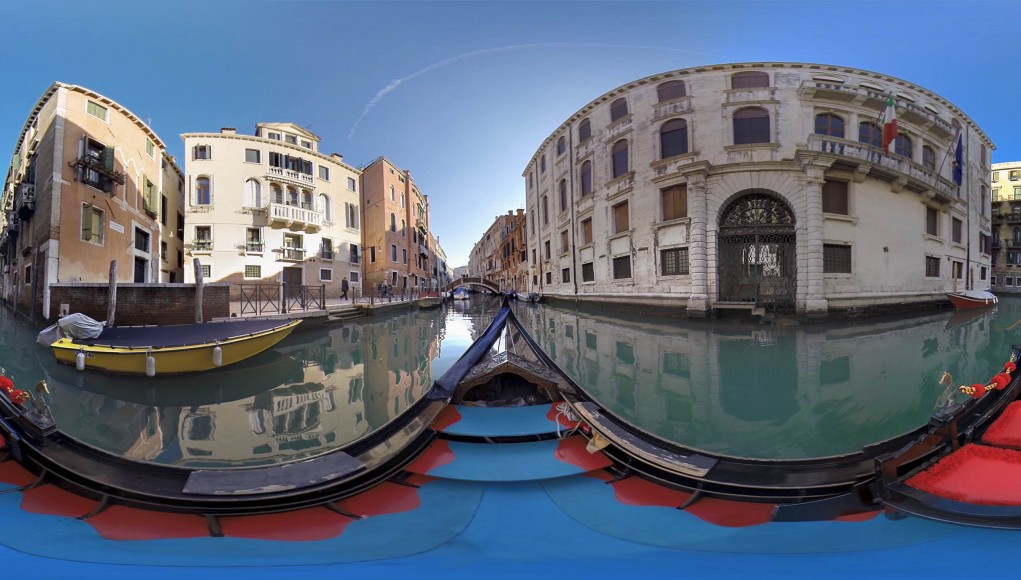A friend of mine posted some video on Facebook a few months ago that blew me away. It seemed like a crane shot, the footage swooped and turned in a crowded market place. It might have been shot with a drone but no way — too dangerous with all of those people around. I asked him about it and he told me it was shot with a Rylo 360 degree camera. So I looked into it.
360 degree cameras have two or more 180 degree lenses that shoot every angle at once and then combine the still photo or video footage. In post production you can select the angle to show or post a 360 degree still image that the viewer can manipulate. With video post production you can select where you want to the camera to look. The $499 Rylo 360 camera was one of the first to provide easy to use software on a cell phone which could be used to create amazing footage by picking pivot points during the video so the camera can follow people or swoop down, slide in, swoop out etc. You can create wide-angle shots or even “tiny planets” which are so zoomed out it looks like you are looking down on a sphere.
I had looked into drones as another fun way to add some exciting shots to my videos but after reading about all of the air space regulations, the annoying buzzing, the lost drones, the prohibition on drones in National Parks and other downsides of drone usage, I thought I’d try a 360 degree camera. Looking at the options from $3,000 pro level cameras to sub $100 toys, I decided on the Insta360 One from the camera manufacturer as it seemed to have all of the features of the Rylo including similar post production editing on cell phones as well as the Insta360 Studio software that allows one to edit footage on a computer.
Insta360 One
The Insta360 One is a very small pocketable camera shaped like an elongated pill I suppose. It’s most distinctive feature is two 180 degree off set camera lenses – one on either side. The two lenses shoot at the same time with a slight overlap and the final footage goes together seamlessly in 360 degrees.
There is a micro SD card slot, a power plug, a lighting plug for attaching to an iPhone for viewing or editing, a tripod hole and a microphone.
There is one control button. Control is very basic. Push the button once to turn on. Wait a few seconds for it to boot up and then you can push once to take a still photo immediately, two quick clicks to start video or three quick clicks for time-lapses. You can also program the third button to do other things when it is connected to the phone. I changed mine three clicks to be a ten second count down timer for photos. This is very handy for getting out-of-the-way of the shots. You get feedback via sound and a color changing or blinking LED light.
If you by the Insta360 Selfie stick it is eliminated from the photos.
This kit also comes with a swivel handle for creating “bullet time” effects like you’ve seen in the matrix. Usually these are created with a bunch of cameras set up around the subject which are fired off in sequence. The Insta360 One mimics this slow motion circular effect by being swung either on a string (included with the Insta360 One is some fish line and a bolt that attaches to the tripod slot) or with the handle. In bullet time mode the camera shoots at 240 frames a second for that slow mo effect. It’s neat.
But I went for a selfie stick with a tripod bottom. It doesn’t completely disappear in post production but it’s close enough. The tripod bottom is great for getting out-of-the-way of timer shots and you need to get some distance from the camera other wise your head will be greatly distorted.
